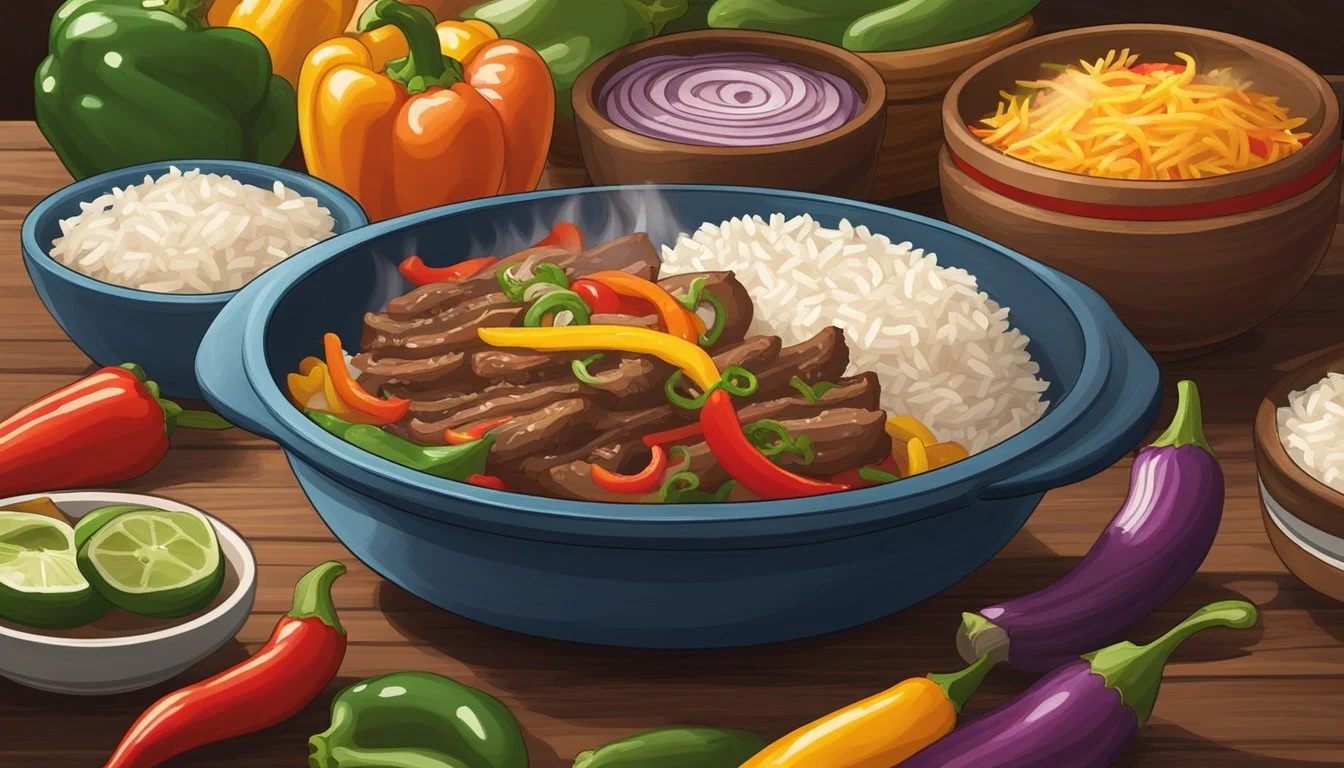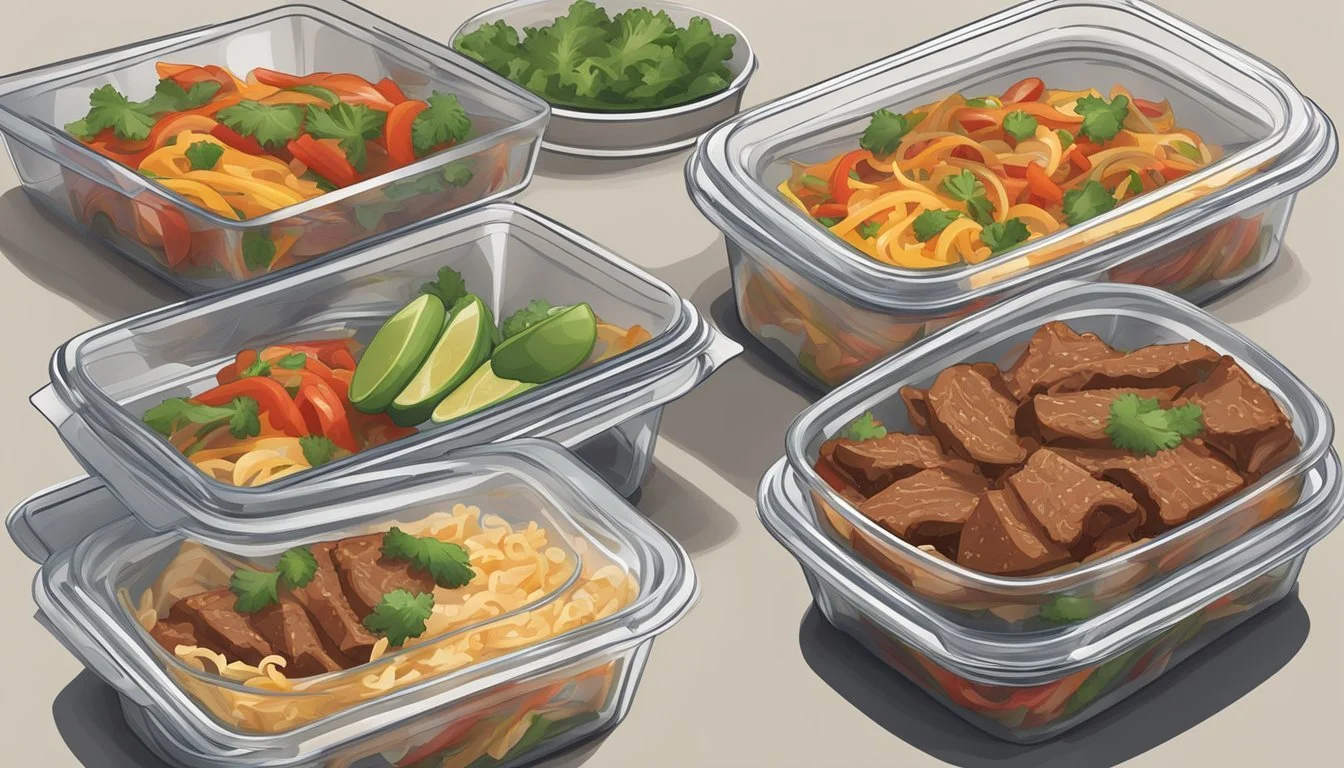How Long Do Beef Fajita Bowls Last?
Storage Tips and Shelf Life
Beef fajita bowls are a delightful combination of grilled beef, fresh vegetables, and flavorful seasonings, making them a popular choice for a quick and satisfying meal. With busy lifestyles and the convenience of meal prepping, understanding the shelf life of beef fajita bowls is crucial for ensuring food safety and quality. When stored properly in an airtight container in the refrigerator, beef fajita bowls can last for up to 3-4 days.
Proper storage practices are essential for maintaining the freshness of beef fajita bowls. Ensuring that the beef is fully cooked and that the bowls are cooled to room temperature before refrigeration can help preserve their quality. Freezing is another option to extend the shelf life, allowing the bowls to last for up to 2-3 months in the freezer.
The convenience of having a ready-to-eat meal can be a great advantage for individuals and families alike. By taking the right steps to store beef fajita bowls, you can enjoy their delicious flavors without worrying about food spoilage. This guide will walk you through the best practices for maximizing the shelf life of your favorite fajita bowls.
General Information on Beef Fajita Bowls
Beef fajita bowls are popular for their flavorful combination of proteins, vegetables, and grains. They typically offer a balanced mix of nutrients, making them a fulfilling meal option.
Typical Ingredients
A standard beef fajita bowl includes steak, which is often marinated and cooked to perfection. Rice serves as the base, adding a substantial carbohydrate source. Common options include white rice or brown rice.
Beans such as black beans or pinto beans are frequently added for extra protein and fiber.
Vegetables like bell peppers and onions are essential, providing vitamins and crunch. Jalapeños may be included for heat. Seasonings like garlic and fajita mix elevate the dish's flavor profile.
Optional ingredients might feature lettuce, cheese, and garnishes like cilantro. These additions offer customization to suit different tastes.
Nutritional Value
Beef fajita bowls are nutrient-dense. The main protein source, steak, offers essential amino acids and iron.
Rice provides necessary carbohydrates, fueling the body. If brown rice is used, it adds more fiber compared to white rice.
Beans contribute additional protein and fiber, aiding digestion and providing sustained energy.
Vegetables like bell peppers and onions are rich in vitamins (A and C) and antioxidants. Healthy fats may be present if the bowl includes ingredients like guacamole or a light drizzle of oil.
Overall, these bowls are balanced in macronutrients, with a good mix of proteins, carbs, and fats, making them a comprehensive meal choice.
Proper Storage Techniques
To ensure beef fajita bowls remain fresh and safe to eat, it is essential to store them properly. The two primary storage methods include refrigeration and freezing.
Refrigeration
Beef fajita bowls should be stored in an airtight container to maintain their freshness and prevent contamination. Storing them in the refrigerator at a temperature of 40°F (4.4°C) or below is critical. This method allows the beef fajita bowls to last for up to 3 to 5 days.
It is advisable to label the containers with the date of preparation to keep track of their shelf life. Using clear containers can also help quickly identify the contents. Ensure the refrigerator is not overcrowded, as proper air circulation aids in maintaining an even temperature.
Freezing
Freezing beef fajita bowls is an excellent way to extend their shelf life. To freeze, place the bowls in airtight containers or vacuum-sealed bags to prevent freezer burn. Before sealing, remove as much air as possible to maintain quality.
Frozen beef fajita bowls can last for up to 3 months. When ready to eat, thaw the bowls in the refrigerator overnight rather than at room temperature to minimize bacterial growth. Reheat thoroughly to an internal temperature of 165°F (74°C) for safety.
Shelf Life and Safety
Understanding how long beef fajita bowls remain safe to eat is essential. Proper storage techniques can significantly impact their shelf life, ensuring both freshness and safety.
Refrigerated Shelf Life
Beef fajita bowls, when stored correctly in the refrigerator, usually last up to 4 days. It is crucial to keep them in airtight containers to prevent contamination and maintain flavor. Temperature control is vital; ensure your fridge stays at or below 40°F (4°C). Always check for any signs of spoilage such as an off smell, discoloration, or unusual texture before consuming.
Frozen Shelf Life
Freezing beef fajita bowls can significantly extend their shelf life. Properly stored in the freezer, they can last up to 3 months. Use heavy-duty freezer bags or airtight containers to avoid freezer burn. Label with the date of freezing for easy tracking. Before reheating, ensure the fajita bowls are thoroughly defrosted in the refrigerator overnight to maintain texture and taste.
Safety Tips
To ensure safety, always reheat beef fajita bowls to an internal temperature of 165°F (74°C). Avoid leaving cooked fajita bowls at room temperature for more than 2 hours. When reheating, avoid microwave hot spots by stirring halfway through. Lastly, observe cleanliness by using clean utensils and surfaces to prevent cross-contamination.





